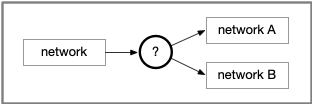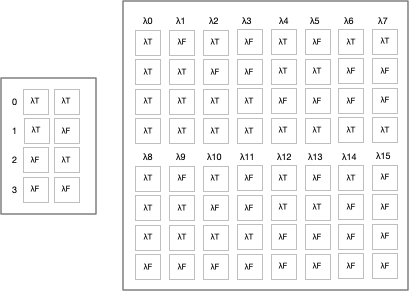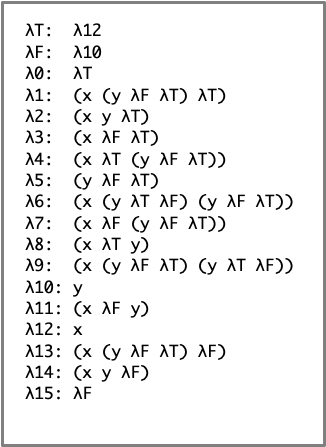Dialog with Jeff Williams: Part IIb
This is the second part to the answer of his question:
I would ask you to demonstrate why reason is an atomic arrangement, and why it being a part of nature would imply truth; and along with that how you would explain erroneous ideas and the limits of the invariability principles.
The answer will consist of five parts:
- The road to logic
- The road to truth
- Logic and Reason1
- The road to meaning
- The road to math
This post will cover the second topic, the road to truth.
The Road To Truth
The previous post covered the mechanical process of the combination and selection of two distinct objects according to fixed rules. It showed how networks of one particular selection rule could implement all of the possible selection rules. These sixteen possible selection rules are the basics of elementary logic, but I can't claim to have shown that, yet, because logic requires the notion of truth. But to do that, I have to provide a physical basis for truth.
We have already considered independent networks of repeated combination and selection operations. Now we want to consider selection of networks. We want to be able to come to a "fork in the road" and select which path to take:

This is "backwards" from the devices we considered in the previous post. A fork in the road has one input and two outputs, but the combination devices in the last post have two inputs and one output:

To maintain the current explanatory paradigm, instead of the combination of distinguishable objects, we will consider the selection of a combination of networks. We will make the arbitrary choice that "truth" will be a combinator that chooses the first input, while "not truth" will be a combinator that chooses the second input. We could have made the opposite choice. In fact, we don't even have to be consistent within sections of a network. The only thing that matters is the final result -- not how it is achieved. That's one of the problems with showing one way how to do something, especially when there are so very many ways to do it. That "one way" can sometimes constrain our thinking so that we think it's the only way to achieve the identical end.

We have already encountered selectors for the first and second inputs, although they weren't specifically identified as such. They are:

Combinator 12 is "first" (it returns the glyph from the first input column) and combinator 10 is "second". Note that, unlike combinator 1 (the universal NAND gate), these gates are sensitive to the placement of the inputs. Note that we are now assuming that we process indistinguishable networks of glyphs as well as distinguishable glyphs. For the case of selecting the first and second input, this is easy. Just make a device that has a path between the desired input and the output. We can handle the more general case of combining and selecting glyphs and networks of glyphs, but that adds a layer of complexity of arrangement that we must save for later.
We introduce the notation that λT is the combinator that selects the first of two inputs and λF is the combinator that selects the second of two inputs. Because as there are 4 ways to pair two inputs of two different objects and 16 possible outputs, we make the same table as with distinguishable symbols:

This table is no different from the table with "righty" and "lefty" in the previous section, except that two distinguishable symbols are replaced with two networks of combinators of "righty" and "lefty".
Just we showed how a network of combinators could reproduce the table in the previous post, we have to show how a network of combinators can reproduce this table. Here is a diagram for λ6:

If you are so inclined, you can create your own diagrams from these representations of the combinators:

The notation (a b c) means pass "b" as the first input to "a" and "c" as the second input. Consult the diagram for λ6 to see how the notation for λ6 is drawn. If you're further inclined, you can verify that these combinators produce the table.
We now have the atomic/mechanical basis for logic and reason, which will be the subject of the next post.
[1] An outline never survives getting words on paper. As this post was becoming lengthy/tedious, I decided to add another section.

